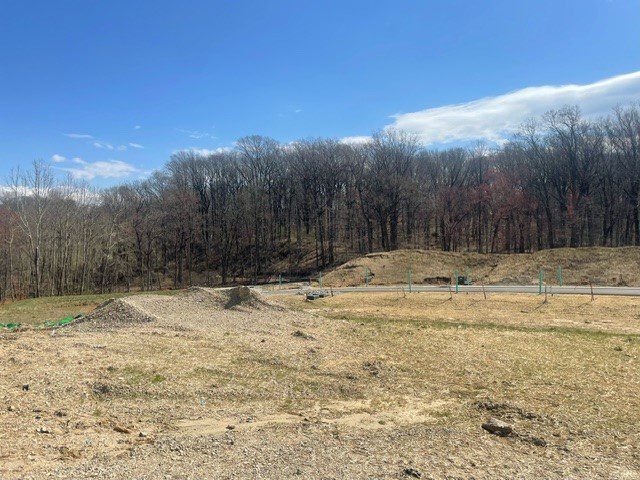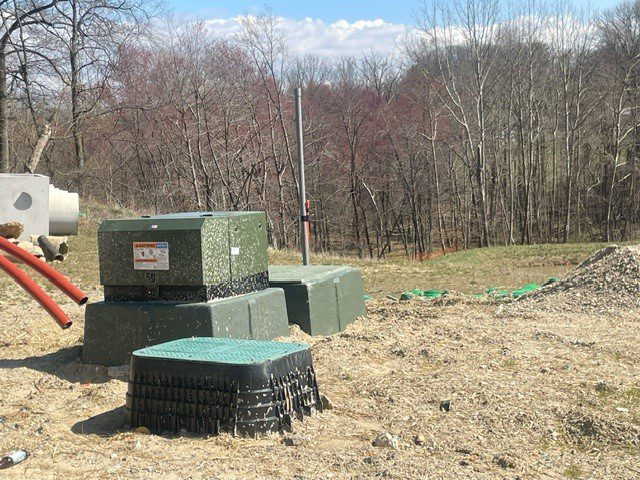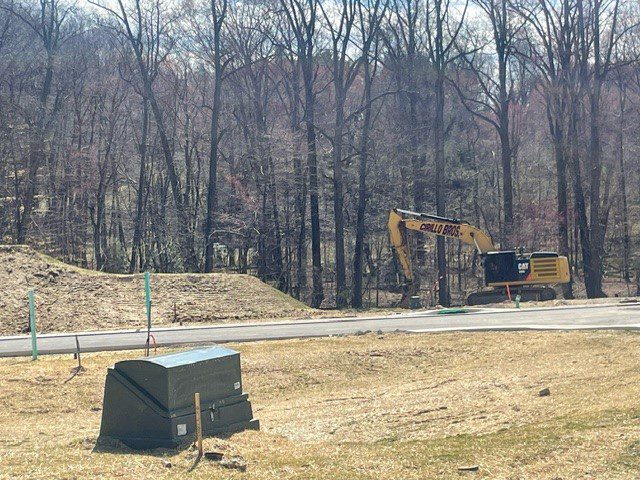Nearly all of Delaware was once covered with forest. Deforestation has removed most of our trees. A recent uptick in woodland loss Sussex spurs an urgent effort to protect them.
Explosive population growth in Sussex County is well documented. Known less well is what is being lost to accommodate all those people: trees. Millions of trees.
Jane Gruenebaum is so concerned with the loss so far–and the potential for loss in the future–that she and Jill Hicks founded the Sussex Preservation Coalition in 2022.
Coalition members are closely following the county’s new development design initiative, which began in early 2023 to update requirements on “perimeter buffers, forest preservation, open space, interconnectivity, superior design, and miscellaneous code updates.”
Yet Sussex is the only jurisdiction in Delaware and neighboring Maryland counties without a unified plan to support forests, Gruenebaum says. She hopes the county adopts one. “We’re not anti-development,” she says. “We’re pro responsible development.”
Mike Valenti, site manager of Delaware Nature Society’s Abbotts Mill Nature Center in Milford, knows what happens when development is managed poorly. He recalls with fondness the potato fields and the forests of eastern Long Island when he was growing up.
“It was a wonderful place, but it’s been so developed over the last 50 or 60 years,” he says. “There’s nothing left, and that’s what we will look like if we don’t put some measures in place. So that’s the decision that people are going to have to make in Sussex County: What do you want the county to look like in 50 years?”
The Benefits of Trees
“Delaware forests play a critical role in maintaining a healthy environment,” Valenti wrote in a federal report when he was state forester. “Healthy trees absorb and store carbon dioxide and release pure oxygen into the atmosphere and in the process filter out pollutants, thus greatly improving air quality. Forests protect aquifers and watersheds, thereby improving the quality of the water that we drink.
“Many wildlife species depend on large blocks of forested habitat for their very survival. And forests provide every citizen with recreational opportunities, along with aesthetic enjoyment, and a general sense of well-being.”
Gruenebaum believes that Sussex Preservation Coalition needs to educate the public about the many benefits of forests. “Too many people think it’s just about nature walks or Bambi or whatever, which is not unimportant, but that’s just part of it.
“Trees do so much more and are really vital to community well-being and health. They support an incredibly important biodiversity ecosystem. Without them, life on this planet just dies. They cool the atmosphere and mitigate floods. There is so much benefit we get from a healthy forest that we need where our landmass is sinking and our ocean is rising. We’re right in the heart of a flood that will be happening in the next 10, 20, 50 years that will devastate this area, and we’re not doing anything to protect the land we have.”
New Castle County in 2018 assigned a dollar value to the benefits of its forests: $25.1 million in sequestered carbon each year, $14.2 million in removal of air pollutants and $6.7 million in reduced stormwater runoff. Forest covers 26 percent of New Castle County.
The Loss of Trees
Delaware has lost most of its historic tree cover. Before European colonization, forests covered 90 percent of the state, according to the 2020 Delaware Forest Assessment. Since then, large areas have been cleared for agriculture and development. The state is now 27 percent forest: 354,000 acres of its total 1.3 million acres, according to the latest data.
New Castle County enhanced forest protection and preservation in 2021. Kent County code has a section on woodland preservation. It focuses development on its middle, roughly following routes 13 and 1, to better protect the landscape elsewhere. Maryland passed a reforestation law in 1989 and updated its 30-year-old forest conservation act in 2023.
Sussex is Delaware’s largest county geographically (614,000 acres) and most forested (31 percent), but its forests are in the most danger because of the lack of comprehensive protection and the pressure to develop. Sussex has 189,000 acres of forest, down from 232,000 acres in the 1990s, says deputy state forester Chris Miller. That’s a loss of 43,000 acres over the past 30 years.
“Forests in Delaware offer the path of least resistance when constructing massive infrastructure projects like State Route 1 or expansive housing developments,” the Delaware Forest Assessment reports. Other factors in woodland loss include fire damage, insect damage, and saltwater incursion; thousands of acres of Prime Hook National Wildlife Refuge were lost after a major northeast storm in 2008, Miller says.
About 80 percent of forests are privately owned, yet few landowners have formal management plans. The Delaware Department of Agriculture runs about 10 programs to offer advice and financial aid for forests. They include forest management plans, a forest stewardship program, and cost-sharing programs.
And when development occurs adjacent to forests owned by the state and nonprofits, management is adapted to add features like fire breaks. The department also enforces laws that ensure timber harvests conform to best practices and that harvested areas are reforested. They include the Forest Practices Erosion and Sedimentation Law and the Delaware Seed Tree Law.
Support of Trees
In November 2023, Sussex County council and planning and zoning commission members prioritized six elements of development design. After weighing all the votes, forest preservation tied with interconnectivity for second. Perimeter buffers and open space tied for first. By December, staff members started drafting new guidelines on perimeter buffers. Advocates want significant buffers that protect trees, not merely screen the views between neighborhoods or roadways.
Valenti and Gruenebaum look at trees from different perspectives. He has several college degrees, including a bachelor’s degree in forest services and a doctorate in entomology, and years of work experience in the sector. She is a longtime visitor to coastal Sussex who retired to Rehoboth Beach in 2017.
Gruenebaum and Valenti agree that the discussion is about both benefits for residents and revenue for the county. “It’s always about the money,” she says.
For Gruenebaum, the money involves the higher value of forested land when it is zoned (or rezoned) for development, the transfer taxes associated with property sales, and the higher revenue generated in property taxes when homes and buildings fill once-forested land. Yet that new development and increased population creates higher costs (and burdens) in providing services to residences and businesses.
For Valenti, revenue could come in a surprising way: redeveloping the state’s forestry industry, where trees would be harvested like farmers’ crops, with harvest schedules plotted in decades, not years. That would provide the economic incentive to maintain, nurture, and even increase forested land.
The timber industry once supported large sawmills on the Delmarva Peninsula, primarily to turn pine into lumber, Valenti says. Now only smaller mills, often run by the Amish, exist. “Foresters are in the business of growing trees,” he says. Forests should be trimmed to maintain their health and, at the same time, provide revenue. Individual trees can be harvested in some forests. Pine forests need to be clear-cut to provide the sunlight needed for regeneration. But the clear-cutting could be done in manageable stretches of just 20 or 30 acres, he says.
Gruenebaum–whose name is German for “green tree”–is doing her part. Her property had only one tree on it when she bought it, and she’s planted six more, with one more due in the spring of 2024.




About the Author: Ken Mammarella is a Delaware native and longtime journalist who in his spare time likes to explore the terrain by bike.
Learn more
Sussex Preservation Coalition (https://www.sussexpreservationcoalition.org/)
Sussex County Development Design Initiative (https://sussexcountyde.gov/development-design)
Tree cover in New Castle County (Tree Cover Status and Change (newcastlede.gov)
Delaware forest Assessment (Delaware Forests: 2018 Summary Report (usda.gov)
Historic Forest Cover in Delaware (delawaretrees.com/2020_del_forest_resource_assessment.pdf)
Forest Protections in New Castle County (News Flash • County Executive Meyer applauds passage ordinan (newcastlede.gov)
Woodland Protection in Kent County (woodland preservation)
Delaware Forest Practices Erosion and Sedimentation Law (https://delcode.delaware.gov/title3/c010/sc06/index.html)
Delaware Seed Tree Law (Delaware Seed Tree Law)
Maryland ReforestationLaw (Maryland Reforestation Law)
Maryland Forest Conservation Act (Forest Conservation Act (maryland.gov)
Forest management and conservation programs for landowners (Conservation – Delaware Department of Agriculture – State of Delaware)
If you want to help
Volunteer at a Delaware Nature Society tree planting event.
Subscribe here to Delaware Nature Society’s advocacy newsletter to stay informed of emerging policy changes and action alerts.
Development Design | Sussex County (sussexcountyde.gov)
Sussex Preservation Coalition unites more than a thousand individuals, plus 20 local groups and the chapters of national groups. Members include the Bethany Beach Landowners Association, Delaware Habitat Guardians, Delaware Interfaithh Power and Light, Evans Farm Watch, the Inland Bays Foundation, Native Roots Farm Foundation, The Nature Conservancy Delaware/Pennsylvania Chapter, Plastic Free Delaware, Preserve Our Park, Save Our Lakes3, the Sierra Club, Southern Sussex County Community Action Group, Sussex Alliance for Responsible Growth, Sussex Preservation Coalition, Sussex2030, Teach a Person to Fish Society and the Unitarian Universalists of Southern Delaware.
New Jersey in 2022 passed the No Net Loss Compensatory Reforestation Act.